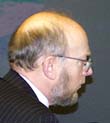RF Cascade Workbook for Excel
RF & Electronics Symbols for Visio
RF & Electronics Symbols for Office
RF & Electronics Stencils for Visio
RF Workbench
T-Shirts, Mugs, Cups, Ball Caps, Mouse Pads
Espresso Engineering Workbook™
Smith Chart™ for Excel
|
|
How to test a directional couplers? - RF Cafe Forums
|
| rakesh_aarya
|
|
Post subject: How to test a directional couplers?
Posted: Tue Jun 16, 2009 12:39 pm
|
|
Joined: Tue Jun 16, 2009
12:25 pm
Posts: 4 |
|
Can anybody tell me how to test a directional coupler
using vector network analyser...
I dont have
specifications for the the directional coupler...the
components are pretty old ....I need to get the
specification using Vector network analyser...
thanks
cheers
Rakesh
|
|
| |
|
 |
|
nubbage |
|
Post subject: Re: How to test a directional couplers?
Posted: Wed Jun 17, 2009 3:04 am
|
|
| |
| General |
 |
Joined: Fri Feb 17, 2006
12:07 pm
Posts: 268
Location: London UK
|
|
Hi Rakesh
The approach to testing depends on
the configuration of the DUT:
is it coaxial or
waveguide or stripline?
is the isolated port
internally terminated?
or is there an external
load with access to the isolated port?
_________________
At bottom, life is all
about
Sucking in and blowing out.
|
|
| |
|
 |
|
rakesh_aarya |
|
Post subject: Re: How to test a directional couplers?
Posted: Tue Jun 23, 2009 11:52 am
|
|
Joined: Tue Jun 16, 2009
12:25 pm
Posts: 4 |
|
The problem is that the directional couplers that
i have is from manufacture named ANZAC electronics.
it was closed in 1960's.I dont have any datasheets
for it... I need to find all the characteristics
including the frequency range,etc..
I have a
two port VNA by agilent technologies ...
can
u tell for both kind of Dc.. The islolated port
is terminated internally...
thanks
rakesh
|
|
| |
|
 |
|
nubbage |
|
Post subject: Re: How to test a directional couplers?
Posted: Wed Jun 24, 2009 2:48 am
|
|
| |
| General |
 |
Joined: Fri Feb 17, 2006
12:07 pm
Posts: 268
Location: London UK
|
|
Hi Rakesh
I see Kirt has given you a very comprehensive
answer under "components".
Not much to add to
that. I guess the coupler of 1960s vintage has N
type connectors, which at that time maxed out at
6 or 7GHz, so that probably sets a top limit to
the frequency range. Above 7GHz the N-type connector
starts to launch waveguide modes and the Reflexion
Coefficient vs frequency becomes erratic (although
today technology has improved that to around 12GHz).
The only point to be careful about then is obtain
a good quality APC-7 to N type transition for at
least 2 of the 3 exposed ports of the coupler.
Good luck with that.
_________________
At bottom, life is all
about
Sucking in and blowing out.
|
|
Posted 11/12/2012
|
|

Copyright: 1996 - 2024
Webmaster:
Kirt
Blattenberger,
BSEE - KB3UON
RF Cafe began life in 1996 as "RF Tools" in an AOL screen name web space totaling
2 MB. Its primary purpose was to provide me with ready access to commonly needed
formulas and reference material while performing my work as an RF system and circuit
design engineer. The World Wide Web (Internet) was largely an unknown entity at
the time and bandwidth was a scarce commodity. Dial-up modems blazed along at 14.4 kbps
while tying up your telephone line, and a nice lady's voice announced "You've Got
Mail" when a new message arrived...
|
All trademarks, copyrights, patents, and other rights of ownership to images
and text used on the RF Cafe website are hereby acknowledged.
|
|
All trademarks, copyrights, patents, and other rights of ownership to images
and text used on the RF Cafe website are hereby acknowledged.
My Hobby Website: AirplanesAndRockets.com
My Daughter's Website: EquineKingdom
|
|
|
|


